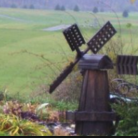
While working on her master's degree in school psychology, our daughter, Jenn, was treated rudely by peers. What did she do to cause this disrespect from her peers? She declined to go to bars with them after classes, but would simply go home to her husband… while classmates complained to their professors that Jenn would not socialize with them.
Confronted by peers and profs, Jenn remained true to herself and gently explained that she had never been to a bar in her life and was not about to start going just to please them. She further explained she was married, and that her husband came first. Professors agreed with Jenn and dismissed the complaints. In turn, Jenn kindly invited her classmates to her home for study groups and team projects, sharing those scrumptious desserts that she was famous for.
Over time, the hearts of her friends softened under Jenn’s kindness and love. In fact, they began to respect her even more for standing up for her faith in God and began asking questions. A month after earning her school psychologist degree, Jenn passed away at age 25 on June 30, 2003. Alfred University held a memorial service that October, sharing they had created the Jennifer Hale Literacy Lending Library as a lasting legacy in honor of her dedication to helping children.
During the memorial service, two young women stood up and shared how they had initially been rude to Jenn. Instead of retaliation, they saw God's love shine through our daughter’s life such that they both said they had accepted Christ as their Savior because of her. In memory of Jenn’s gentle loving spirit, they read the Beatitudes and other Scripture as their part in Alfred University’s memorial tribute to Jenn. They couldn’t understand Jenn’s lack of interest in going to the bars with them and brought complaints against her. Instead, God used it for His purposes and brought good out of the situation.
Which reminds me of ancient Israel’s Joseph who was sold into slavery by jealous brothers. From the School of Hard Knocks, Joseph had graduated from a lowly but respected slave to prison and on to being next in command under Pharoah. It was his reliance on God, and ability to interpret dreams, which led his success. Meeting his brothers during the great famine, he reassured them he held no animosity, saying “You intended to harm me, but God intended it for good to accomplish what is now being done, the saving of many lives.” (Genesis 50:20 NIV) Similarly, centuries later, the Apostle Paul wrote “we know that in all things God works for the good of those who love him, who have been called according to His purpose.” (Romans 8:28 NIV)
With hindsight’s rearview mirror, we can often see the good that comes out of our bad situations. Yet, it’s so difficult to understand sometimes how anything positive can come from life’s most painful tragedies. Instead, when we allow God to work on our behalf, no matter how long it might take, His hand will weave the shattered pieces back together. And not just to bring about a new beginning, but to bring about something more wonderful than we could ever imagine… as He uses each trial for our betterment, our good.
God Meant It For Good
Linda A. Roorda
You meant it for ill, God meant it for good
For all of life has meaning within,
But it’s how we deal with what comes our way
When all seems grim or brightly shines clear.
~
You only ask that I would obey
And heed Your voice when doubts ensnare,
When storms arrive and the way seems dark
That to You I turn, Your guidance to seek.
~
When thoughts arise to do life my way
Let me yet seek Your wisdom as guide.
Open my ears to the sound of Your voice
Let me not heed the call of disgrace.
~
May I ever know the path that I take
Is framed by Your word, a hedge to protect.
And when my thoughts are prone to wander
Call me back, Lord, with voice loud and clear.
~
For You meant for good this difficult path
To test my heart and to try my soul,
That after all the seeking I’ve done
Your hand I would see with its purpose good
~~
- Read more...
- 0 comments
- 276 views

